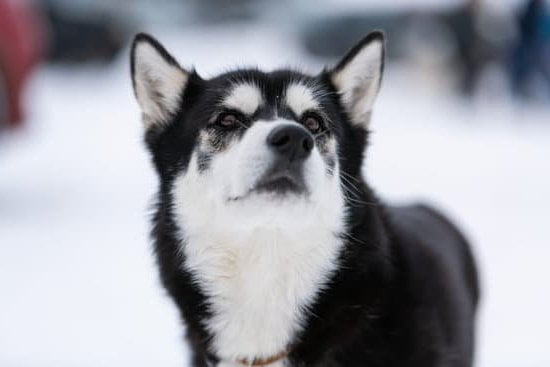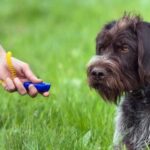Is your furry friend constantly darting after squirrels in the park, causing you endless frustration? Understanding how to train a dog not to chase squirrels is essential for both their safety and your peace of mind.
Natural instincts play a significant role in this behavior, but with the right techniques and consistency, it is possible to redirect their focus. This section will delve into the instinctual drive behind a dog’s urge to chase squirrels and offer practical guidance on effectively training them to resist the temptation.
Dogs have an innate instinct to chase small, fast-moving creatures like squirrels due to their ancestral hunting habits. This natural prey drive can be challenging to overcome, but with proper training and understanding, it is absolutely achievable. By comprehending this instinctual behavior, pet owners can develop strategies to address and modify their dog’s chasing tendencies.
The consequences of allowing a dog to continuously chase squirrels can be detrimental. It not only poses risks to the squirrel population but also puts your pet in harm’s way. Furthermore, it can lead to unruly behavior and disobedience if left unchecked. Therefore, it is crucial to implement effective training methods that will discourage this type of behavior in your canine companion.
The Negative Consequences of Allowing a Dog to Chase Squirrels
It is important for dog owners to understand the natural instincts of their pets, especially when it comes to chasing squirrels. Dogs have a strong prey drive, which means they are naturally inclined to chase after small animals like squirrels. While this behavior may seem harmless or even comical at first, there are negative consequences to allowing a dog to chase squirrels.
One of the main dangers of allowing a dog to chase squirrels is the risk of injury. Dogs can easily become so focused on chasing a squirrel that they become oblivious to their surroundings, putting them at risk of getting hit by cars or getting lost. Additionally, if a dog actually catches a squirrel, there is the potential for the wild animal to bite or injure the dog out of self-defense.
To prevent these negative consequences from occurring, it is crucial for dog owners to take proactive steps in training their dogs not to chase squirrels. This involves basic obedience training and teaching the dog to focus on their owner, as well as employing techniques for redirecting the dog’s attention away from squirrels.
| Negative Consequences | Preventive Measures |
|---|---|
| Risk of injury from traffic or getting lost | Basic obedience training and conditioning dog’s focus |
| Potential harm if catching a squirrel | Redirecting attention away from squirrels and positive reinforcement |
Basic Obedience Training for Dogs
Training your dog not to chase squirrels begins with establishing a strong foundation in basic obedience. These fundamental commands provide the framework for effective communication and control over your pet, which is essential for preventing them from chasing after every squirrel they see.
Teaching Sit, Stay, and Come
It’s crucial to start with teaching your dog essential commands like “Sit,” “Stay,” and “Come.” These are fundamental skills that will form the basis of their training to resist the temptation of chasing squirrels. By mastering these commands, you can effectively control your dog’s behavior when faced with potential distractions.
Leash Training
Proper leash training is also vital in teaching your dog not to chase squirrels. When out on walks, a well-trained dog should ideally walk calmly by its owner’s side without pulling or darting off at sudden stimuli such as squirrels. By practicing loose leash walking techniques and reinforcing good behavior, you can ensure that your dog remains under control and less inclined to chase squirrels.
Positive Reinforcement
Positive reinforcement plays a key role in obedience training. Reward your dog with treats, praise, or playtime when they exhibit self-control around squirrels. This encourages them to focus on you rather than giving in to their instinctual urge to chase. Consistently rewarding desired behavior will help reinforce the concept that listening to you brings positive outcomes.
By establishing a strong foundation in basic obedience training, you can lay the groundwork for teaching your dog how to resist the urge to chase squirrels while out on walks or in other outdoor settings. Through consistent practice and patience, you can effectively train your loyal companion not to give in to their natural instincts.
Conditioning a Dog to Focus on Their Owner
One of the key aspects in training a dog not to chase squirrels is teaching them to focus on their owner. This involves building a strong connection and bond with the dog, ultimately allowing them to look to their owner for guidance and direction. By establishing this relationship, it becomes easier to redirect their attention away from squirrels and onto their owner.
To begin conditioning a dog to focus on their owner, basic obedience training is essential. This includes commands such as “sit,” “stay,” and “come,” which can be practiced in various environments and situations. Consistent practice of these commands will help the dog understand that they should listen to and follow the directions of their owner.
Another effective technique for conditioning a dog to focus on their owner is through positive reinforcement. When the dog successfully follows a command or redirects their attention from chasing squirrels, they should be rewarded with treats, praise, or playtime. This reinforces the behavior of listening to their owner and helps solidify the bond between the two.
In addition to basic obedience training and positive reinforcement, it is important for owners to remain patient and consistent throughout the training process. Every interaction with the dog is an opportunity for them to learn and improve their focus on their owner. With time and dedication, conditioning a dog to focus on their owner can significantly reduce their inclination to chase squirrels and other distractions.
Techniques for Redirecting a Dog’s Attention Away From Squirrels
When it comes to training a dog not to chase squirrels, one effective technique is redirecting their attention away from these furry critters. Here are some techniques that can be used to help achieve this:
1. Use a command: Teach your dog a specific command, such as “leave it” or “focus.” When they start to show interest in a squirrel, use the command to redirect their attention back to you.
2. Distraction: Carry a toy or treat with you on walks and use it to divert your dog’s focus away from the squirrels. Throw the toy in the opposite direction or offer the treat as soon as you notice them becoming interested in a squirrel.
3. Leash training: Keep your dog on a leash during walks and use gentle but firm guidance to steer them away from any potential squirrel distractions.
In addition to these techniques, it’s important to remember that consistency and patience are key when training a dog not to chase squirrels. It may take time for your furry friend to understand and respond to these redirection methods, so remain patient and persistent in your efforts.
Remember, every dog is different, so what works for one dog may not work for another. It’s important to find the right technique that resonates with your dog’s personality and instincts how to train a dog not to chase squirrels.
Using Positive Reinforcement to Discourage Chasing Behavior
Positive reinforcement is a powerful tool when it comes to training a dog not to chase squirrels. This method involves rewarding your dog for exhibiting the desired behavior, in this case, ignoring squirrels and staying focused on their owner. By using positive reinforcement, you can effectively communicate to your dog what behavior is expected and encourage them to continue acting in a calm and controlled manner.
Here are some ways to incorporate positive reinforcement into your training efforts:
- Use treats: When you notice your dog ignoring a squirrel and paying attention to you instead, immediately give them a tasty treat as a reward. This will help reinforce the idea that ignoring squirrels leads to something positive.
- Verbal praise: In addition to treats, offering verbal praise such as “good job” or “well done” can also be an effective form of positive reinforcement. Dogs thrive on the approval of their owners, so hearing words of encouragement can motivate them to repeat the desired behavior.
- Playtime and affection: Another way to reinforce good behavior is by offering playtime or affection as a reward. Spend some quality time engaging in activities that your dog enjoys whenever they successfully ignore squirrels during walks or outings.
Consistency is key when using positive reinforcement. Make sure to offer rewards each time your dog displays the desired behavior of not chasing squirrels. Over time, they will learn that ignoring squirrels and focusing on you leads to pleasant experiences, making them more likely to repeat this behavior in the future.
Remember that every dog responds differently to training methods, so it’s essential to be patient and consistent as you work on discouraging chasing behavior. With dedication and positive reinforcement, you can effectively train your dog not to chase squirrels and enjoy peaceful walks together.
Consistency and Patience in Training a Dog Not to Chase Squirrels
Setting Clear Boundaries
One of the most important aspects of training a dog not to chase squirrels is being consistent with boundaries. Dogs thrive on consistency, so it’s crucial to establish clear rules and consistently enforce them. This means that everyone in the household should be on board with the training and follow the same guidelines. If chasing squirrels is not allowed in the yard, then it should never be permitted, regardless of the circumstances.
Positive Reinforcement
Using positive reinforcement is an effective way to train a dog not to chase squirrels. When your dog successfully resists the urge to chase a squirrel or responds to your commands, reward them with treats, praise, or toys. Positive reinforcement helps reinforce the desired behavior, making it more likely for your dog to continue obeying the command in similar situations. This also helps create a positive association with following your instructions instead of chasing squirrels.
Persistence and Patience
Training a dog not to chase squirrels can be challenging and may take time. It’s important for pet owners to remain patient and persistent throughout the training process. Dogs need time to learn new behaviors and habits, so patience is key.
Consistently practicing obedience training and using redirection techniques will eventually help reduce your dog’s desire to chase squirrels. Remember that every dog is different, so some may progress faster than others, but staying patient and consistent will ultimately lead to success.
By implementing consistent boundaries, using positive reinforcement, and exercising patience during training sessions, pet owners can effectively teach their dogs not to chase squirrels over time.
Practical Tips for Managing a Dog’s Environment to Minimize Squirrel Encounters
Dogs have a strong natural instinct to chase squirrels, as it is a behavior rooted in their predatory nature. However, allowing a dog to chase squirrels can lead to negative consequences for both the dog and the squirrel. This is why it is important for dog owners to take proactive measures to train their dogs not to chase squirrels.
One effective way to prevent dogs from chasing squirrels is through environmental management. This involves minimizing the opportunities for a dog to encounter squirrels in the first place.
For example, keeping the dog on a leash or within a fenced area when outside can prevent them from running off after squirrels. Additionally, using deterrents such as motion-activated sprinklers or noise-making devices in areas where squirrels are known to frequent can help discourage both the presence of squirrels and the dog’s desire to give chase.
Another practical tip for managing a dog’s environment is to provide plenty of mental and physical stimulation at home. A tired and mentally stimulated dog is less likely to fixate on external stimuli such as squirrels. Engaging in regular playtime, walks, and training exercises with the dog can help redirect their focus from potential squirrel sightings.
Furthermore, creating a safe space indoors where the dog feels relaxed and calm can also contribute to minimizing squirrel encounters. By providing comfortable bedding, interactive toys, and engaging activities indoors, the dog will be less inclined to seek out excitement by chasing squirrels outside.
| Environmental Management | Mental & Physical Stimulation |
|---|---|
| Minimize opportunities for encountering squirrels | Regular playtime, walks, and training exercises |
| Use deterrents in areas frequented by squirrels | Create a safe and comfortable indoor environment |
Seeking Professional Help for Persistent Chasing Behavior
In conclusion, training a dog not to chase squirrels can be a challenging but ultimately rewarding endeavor for any pet owner. Recognizing and understanding a dog’s natural instincts to chase squirrels is the first step in addressing this behavior. It is important to acknowledge the negative consequences of allowing a dog to chase squirrels, as it can lead to potential dangers and disruptions in daily life.
Basic obedience training is essential in teaching a dog to listen and respond to commands from their owner. Additionally, conditioning a dog to focus on their owner and using redirection techniques can help minimize their desire to chase squirrels. It is also crucial to use positive reinforcement when discouraging chasing behavior, as well as maintaining consistency and patience throughout the training process.
Implementing practical tips for managing a dog’s environment, such as using leashes or barriers to minimize squirrel encounters, can also aid in the training process. However, for persistent chasing behavior, seeking professional help from a certified animal behaviorist or trainer may be necessary. With dedication and proper guidance, it is possible for any pet owner to successfully train their dog not to chase squirrels.
Overall, with the right approach and resources, pet owners can effectively address and modify their dog’s behavior regarding chasing squirrels. Remember that while it may take time and effort, the end result of having a well-behaved and obedient companion will make the training process worthwhile. By following these guidelines on how to train a dog not to chase squirrels, pet owners can enjoy safer and more harmonious outdoor activities with their beloved furry friends.
Frequently Asked Questions
How Do You Stop a Dog From Chasing Squirrels?
It can be challenging to stop a dog from chasing squirrels, but training and positive reinforcement can help. Teaching the “leave it” command and redirecting your dog’s attention can be effective.
Why Does My Dog Like to Chase Squirrels?
Dogs like to chase squirrels because it’s an innate behavior rooted in their predatory instincts. Squirrels trigger their prey drive, and the chasing satisfies their natural instincts.
Why Are Dogs Aggressive Towards Squirrels?
Dogs may be aggressive towards squirrels due to their prey drive and territorial instincts. When they see a squirrel as potential prey or as an intruder in their territory, they may exhibit aggressive behavior. This can be managed through proper training and socialization.

Welcome to the blog! I am a professional dog trainer and have been working with dogs for many years. In this blog, I will be discussing various topics related to dog training, including tips, tricks, and advice. I hope you find this information helpful and informative. Thanks for reading!





